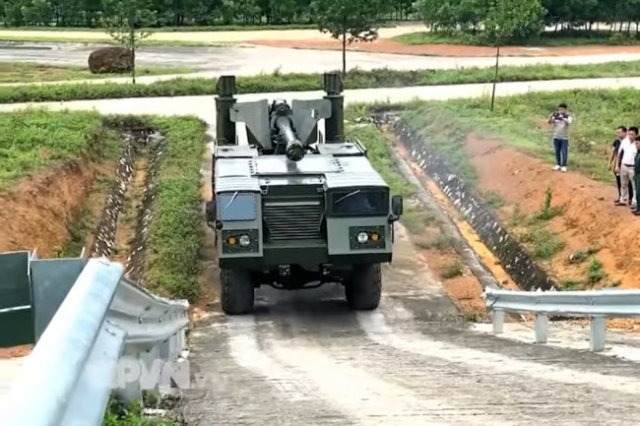A PTH-130 wheeled self-propelled artillery unit is being tested in Vietnam. Externally, this combat vehicle is very similar to the self-propelled guns from the Jupiter series, which was produced in Cuba and was first demonstrated in the middle of the first decade of the XXI century.
As reported, the novelty uses a Soviet 130-mm M-46 cannon of the 1953 model, and the famous three-axle KrAZ-255 all-terrain vehicle, nicknamed "Laptezhnik", as a chassis.
The "Forty-sixth" have been operated for a long time in the units of the People's Army. They have been tested in a real combat stop, for example, during combat operations against the American armed forces, and have proven themselves very well.
Their rate of fire reaches eight rounds per minute. The initial velocity of the projectile is 930 meters per second. The maximum firing range of conventional high-explosive shells is more than 27 km.
At the same time, in a number of countries, active-jet ammunition is being produced for them, which have the ability to hit targets at much longer distances, for example, the Iranian ones are already hitting 37 km.
The main drawback of these guns is the lack of mobility inherent, however, in all towed systems. It was in order to eliminate this weak point that it was turned into a self-propelled gun capable of accelerating up to 70 km/ h on a good road. The power reserve is 450 km.
While there is no exact data on how many people are included in the crew of the PTH-130, but it was reported that Jupiter is operated by six servicemen who are in a double cabin of the original design during the march.
Earlier, Vietnam had already produced wheeled artillery installations based on Russian Ural cars, having mounted captured 105-mm American M101A1 howitzers on them.
Alexey Moiseev

